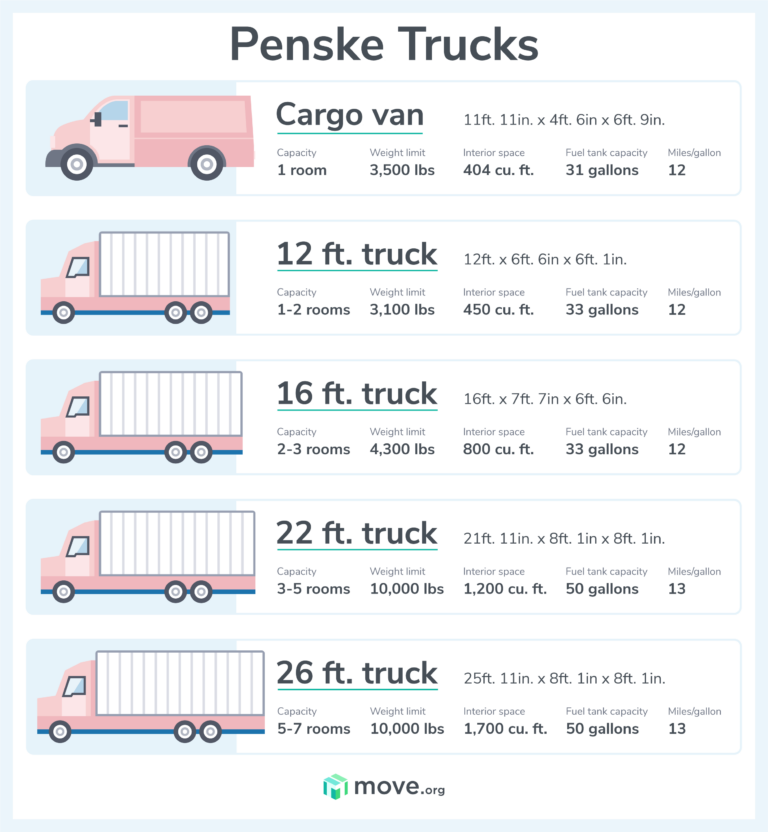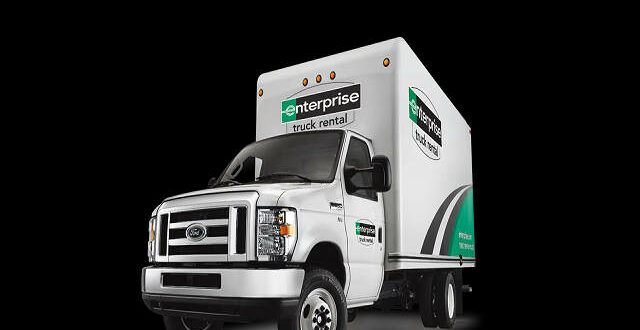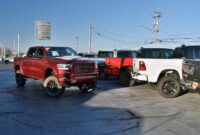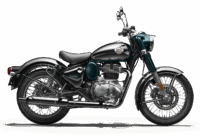Rental Truck Sizes: Your Comprehensive Guide to Choosing the Right Moving Vehicle cars.truckstrend.com
Moving, whether across town or across the country, is often cited as one of life’s most stressful events. Among the myriad decisions to make, choosing the right rental truck size stands out as perhaps the most critical. Opting for a truck that’s too small can lead to frustrating multiple trips, wasted time, and even potential damage to belongings due to overcrowding. Conversely, renting a truck that’s too large means paying for unused space, higher fuel costs, and the added challenge of navigating and parking an unwieldy vehicle. Understanding rental truck sizes isn’t just about cubic feet; it’s about efficiency, cost-effectiveness, and ensuring a smoother, less stressful moving experience.
This comprehensive guide will demystify the world of rental truck sizes, breaking down the options available, detailing what each can typically hold, and providing actionable advice to help you make the best choice for your specific moving needs.
Rental Truck Sizes: Your Comprehensive Guide to Choosing the Right Moving Vehicle
Understanding the Landscape of Rental Truck Sizes
Rental truck companies like U-Haul, Penske, and Budget offer a range of vehicles designed to accommodate various moving scenarios. While specific dimensions might vary slightly between providers, the general categories and their capacities remain largely consistent. These vehicles typically fall into four main categories: cargo vans, small box trucks, medium box trucks, and large box trucks. Each is tailored to different volumes of belongings, from a few bulky items to an entire multi-bedroom house.
Let’s delve into the specifics of each common rental truck size, providing an approximate guide to their dimensions, capacity, and ideal uses.
1. The Agile Cargo Van: For Small Moves & Deliveries
- Approximate Interior Dimensions (LxWxH): 9-11 ft x 4-5 ft x 4-5 ft
- Estimated Cubic Feet: 250-300 cu ft
- Payload Capacity: 2,500 – 3,500 lbs
- Fuel Efficiency: Generally the best among rental options (15-20 MPG)

Ideal For:
- Studio Apartments or Dorm Rooms: Perfect for a bed, dresser, a few boxes, and personal items.
- Moving Large Appliances or Furniture: A refrigerator, sofa, or dining set can fit comfortably.
- Small Business Deliveries: Efficient for transporting goods locally.
- Hauling DIY Supplies: Lumber, drywall, or large tools.

Pros: Easy to drive, maneuverable in urban settings, good gas mileage, often fits in standard parking spaces.
Cons: Limited space for larger moves, no separate cab access to cargo area.
2. The Compact 10-12 Foot Box Truck: Stepping Up in Size
- Approximate Interior Dimensions (LxWxH): 9-12 ft x 6-7 ft x 6-7 ft
- Estimated Cubic Feet: 400-450 cu ft
- Payload Capacity: 3,000 – 3,800 lbs
- Fuel Efficiency: 10-12 MPG
Ideal For:
- Studio or 1-Bedroom Apartments: Can typically hold a queen-size bed, a sofa, a dresser, and several boxes.
- Small Office Moves: Desks, chairs, filing cabinets.
- Transporting a Few Large Items: If a cargo van isn’t quite enough.
Pros: More space than a cargo van, still relatively easy to drive for most individuals, good for navigating suburban streets.
Cons: Less fuel-efficient than a van, requires more parking space.
3. The Versatile 15-16 Foot Box Truck: The Mid-Sized Mover
- Approximate Interior Dimensions (LxWxH): 14-16 ft x 7-8 ft x 7-8 ft
- Estimated Cubic Feet: 700-800 cu ft
- Payload Capacity: 4,000 – 6,000 lbs
- Fuel Efficiency: 8-10 MPG
Ideal For:
- 1-2 Bedroom Apartments or Small Homes: Accommodates multiple pieces of furniture, a queen/king bed, dining set, and numerous boxes.
- College Student Moves: Ideal for relocating a dorm room’s worth of items plus furniture for an off-campus apartment.
- Partial Home Moves: If you’re moving only select rooms or items from a larger home.
Pros: Excellent balance of size and maneuverability for many residential moves, often equipped with a low-deck loading ramp for easier access.
Cons: Noticeably larger to drive than a car, parking can be more challenging.
4. The Spacious 20-22 Foot Box Truck: For Growing Households
- Approximate Interior Dimensions (LxWxH): 19-22 ft x 7-8 ft x 7-8 ft
- Estimated Cubic Feet: 1,000-1,200 cu ft
- Payload Capacity: 6,000 – 8,000 lbs
- Fuel Efficiency: 6-10 MPG
Ideal For:
- 2-3 Bedroom Homes or Larger Apartments: Suitable for most furniture from a medium-sized house, including multiple beds, large sofas, appliances, and many boxes.
- Multi-Room Office Moves: Capable of handling a significant amount of office furniture and equipment.
Pros: Ample space for substantial household moves, typically includes a sturdy loading ramp, reduces the need for multiple trips.
Cons: Significantly larger to drive, requires more caution and experience, higher fuel consumption.
5. The Mighty 24-26 Foot Box Truck: The Largest Residential Mover
- Approximate Interior Dimensions (LxWxH): 23-26 ft x 7-8 ft x 7-8 ft
- Estimated Cubic Feet: 1,400-1,700 cu ft
- Payload Capacity: 8,000 – 10,000 lbs
- Fuel Efficiency: 6-8 MPG
Ideal For:
- 3-5+ Bedroom Homes or Large Estates: Designed for very large moves, accommodating furniture from multiple rooms, garages, and outdoor items.
- Large Business Relocations: When moving extensive office equipment, inventory, or machinery.
Pros: Maximum capacity for residential moves, often equipped with a wide loading ramp and tie-downs to secure cargo.
Cons: Most challenging to drive and maneuver, especially in tight spaces or urban areas; highest fuel costs; may require more driving experience.
How to Choose the Right Rental Truck Size
Selecting the perfect truck isn’t just about eyeballing your belongings. It requires a systematic approach:
- Inventory Your Belongings: Go room by room and make a detailed list of everything you plan to move. Don’t forget items in the garage, attic, basement, shed, or patio. Be specific about large items like king-size beds, sectional sofas, large appliances, and exercise equipment.
- Estimate Cubic Feet: Many rental truck websites offer online calculators or guides that help you estimate the required cubic feet based on the number of rooms or specific items. Use these tools as a starting point. A general rule of thumb:
- Studio/Dorm: 250-400 cu ft
- 1 Bedroom: 400-600 cu ft
- 2 Bedroom: 600-1000 cu ft
- 3 Bedroom: 1000-1400 cu ft
- 4+ Bedroom: 1400+ cu ft
- Account for Bulky & Irregular Items: These take up disproportionately more space. A sofa might require as much space as 20 boxes. Consider how these items will be loaded and if they dictate a larger truck size.
- Factor in Packing Materials: Boxes, moving blankets, dollies, and other supplies also consume valuable space within the truck.
- When in Doubt, Go Bigger: It’s almost always better to have slightly too much space than not enough. The cost difference between one truck size and the next is often less than the time, fuel, and frustration of making an extra trip or having to leave items behind. A slightly larger truck also allows for easier loading and unloading, reducing the risk of damage.
Important Considerations Beyond Size
While cubic feet and room count are primary drivers, several other factors influence your truck rental decision:
- Payload Capacity (Weight Limit): Don’t just consider volume; consider weight. If you’re moving heavy items like safes, large appliances, or a lot of books, ensure the truck’s payload capacity can handle the total weight of your belongings. Overloading is dangerous and can lead to mechanical issues or fines.
- Fuel Efficiency & Costs: Larger trucks consume significantly more fuel. Factor gas costs into your budget, especially for long-distance moves.
- Driving Experience: Are you comfortable driving a large vehicle? If you’re new to driving a truck, consider if a smaller size might be safer, even if it means a tighter squeeze.
- Maneuverability & Parking: Can the truck navigate your streets, driveways, and destination? Will you have adequate space to park and load/unload?
- Loading Features: Most box trucks come with a loading ramp. Some larger trucks might have a low deck for easier loading. Confirm these features if they are important to you.
- Towing Capacity: If you plan to tow your car, ensure the truck has a towing hitch and the appropriate capacity.
- Insurance: Your personal auto insurance might not cover rental trucks. Rental companies offer supplemental insurance plans that are highly recommended for peace of mind.
- Availability: During peak moving seasons (summer, end of month), popular truck sizes book up quickly. Reserve your truck well in advance.
Estimated Rental Truck Sizes & Pricing Table
Please note that rental truck prices are highly variable and depend on numerous factors including location (city vs. rural), demand, time of year, rental duration (local vs. one-way), mileage, fuel costs, insurance, and additional equipment. The prices below are rough estimates for local moves and should be used as a general guide only.
| Truck Size | Typical Capacity | Est. Cubic Feet | Est. Daily Base Rate (Local) | Est. Per-Mile Rate | Common Uses |
|---|---|---|---|---|---|
| Cargo Van | Studio / Small Apt. | 250-300 cu ft | $19.95 – $39.95 | $0.69 – $0.99 | Appliances, large furniture, dorm room, small deliveries |
| 10-12 Foot Box | Studio / 1 Bedroom Apt. | 400-450 cu ft | $29.95 – $49.95 | $0.69 – $0.99 | Small apartments, single rooms, few large items |
| 15-16 Foot Box | 1-2 Bedroom Apt/House | 700-800 cu ft | $39.95 – $69.95 | $0.79 – $1.09 | Mid-sized apartments, small homes, multiple furniture items |
| 20-22 Foot Box | 2-3 Bedroom House | 1000-1200 cu ft | $49.95 – $89.95 | $0.89 – $1.19 | Medium-sized homes, larger apartments, significant household goods |
| 24-26 Foot Box | 3-5+ Bedroom House | 1400-1700 cu ft | $59.95 – $99.95 | $0.99 – $1.29 | Large homes, multi-generational moves, business equipment |
Disclaimer: These prices are highly variable and depend on location, demand, rental duration, company, and promotions. They are rough estimates for local moves and typically do not include fuel, insurance, or additional fees. One-way rentals are generally more expensive and often have different pricing structures (e.g., flat rate plus mileage).
Frequently Asked Questions (FAQ) About Rental Truck Sizes
Q1: What’s the difference between cubic feet and payload capacity?
A1: Cubic feet refers to the volume of space inside the truck, indicating how much "stuff" (boxes, furniture) can physically fit. Payload capacity refers to the maximum weight the truck can safely carry. It’s crucial to consider both: you might have enough volume for all your items, but if they’re very heavy, you could exceed the payload limit.
Q2: Do I need a special license to drive a rental truck?
A2: For typical consumer rental trucks (up to 26 feet), a standard Class D driver’s license is sufficient in the United States. Commercial Driver’s Licenses (CDLs) are generally only required for much larger trucks or those carrying hazardous materials.
Q3: How far in advance should I book my rental truck?
A3: It’s highly recommended to book as far in advance as possible, especially during peak moving seasons (late spring to early fall, end of the month, holidays). Booking 2-4 weeks out is ideal, but for peak times, even earlier (1-2 months) is better.
Q4: What about gas? Do I need to fill it up?
A4: Yes, most rental truck companies require you to return the truck with the same amount of fuel it had when you picked it up (usually full). Failure to do so will result in high refueling charges from the company. Always factor fuel costs into your moving budget.
Q5: Can I tow my car with a rental truck?
A5: Many larger rental trucks (15-foot and up) offer the option to rent a car carrier or tow dolly. Ensure the truck you choose has the appropriate towing package and capacity for your vehicle.
Q6: What kind of insurance do I need for a rental truck?
A6: Your personal auto insurance policy may not cover rental trucks, or it might offer very limited coverage. It’s strongly advised to purchase supplemental coverage from the rental company. Options usually include damage waivers, liability coverage, and personal accident/property coverage. Check with your existing insurance provider first to understand your current coverage.
Q7: What if my items don’t fit in the truck I rented?
A7: If you realize your truck is too small, your options are limited. You might have to make multiple trips (if feasible), leave some items behind, or try to rent a second, smaller vehicle if available. This is why overestimating slightly is often better than underestimating.
Q8: Are there hidden fees I should be aware of?
A8: Be sure to clarify all potential costs beyond the base rental rate. Common additional fees include mileage charges (for local moves), environmental fees, sales tax, insurance premiums, and charges for optional equipment (dollies, moving blankets). Also, inquire about late return fees or cleaning fees.
Conclusion
Choosing the right rental truck size is a pivotal decision that can significantly impact the efficiency, cost, and overall stress level of your move. By carefully inventorying your belongings, understanding the capacities of different truck sizes, and considering important factors like payload, fuel efficiency, and your driving comfort, you can make an informed decision. Remember, a little extra planning goes a long way in ensuring your possessions arrive safely and your moving day is as smooth as possible. With the right truck, you’re not just transporting items; you’re moving forward with confidence.



